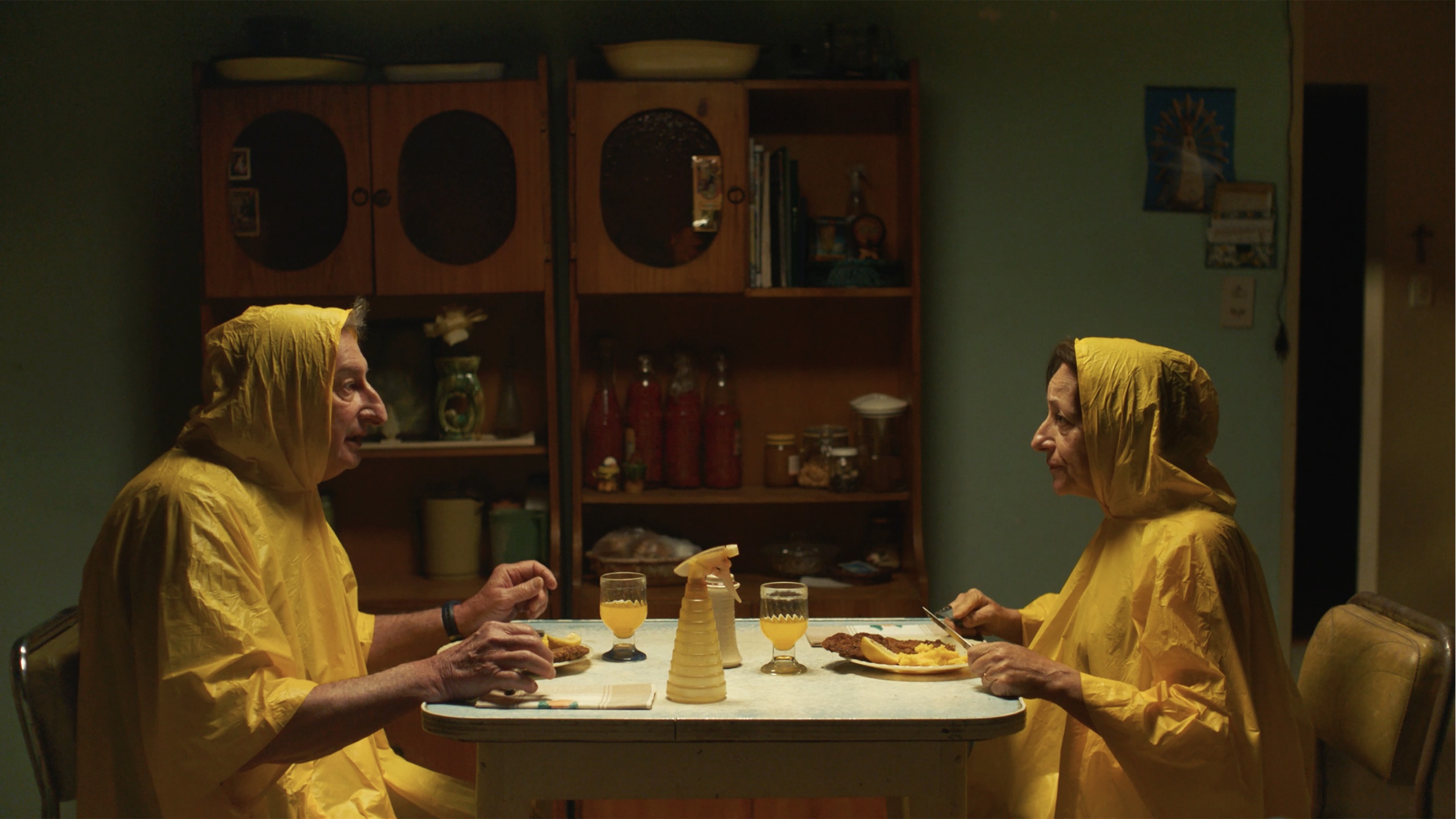The saying goes that miracles are everywhere for those with eyes to see them, which helps to explain why Rita Lopez — the most pious and competitive member of her rural Argentinian community — seems to find one in the first place she looks. Nearing 70, terminally bored of her marriage, and desperate for a heavenly sliver of the recognition that she’s been denied here on Earth, our heroine decides that an old sculpture she uncovers in the musty storeroom of her local church must be the statue of Saint Rita that’s been missing for 30 years, and was assumed to be lost forever.
It’s a big deal. So big, in fact, that Rita (Argentinian icon and “Wild Tales” star Mónica Villa) enlists her sweet and doddering husband Norberto (Horacio Marassi) to help smuggle the statue out of the church so she can spruce it up and unveil it to the rest of the village in style, thereby consecrating an eternal bond with her patron namesake. And she might’ve gotten away with it too, if not for the meddling results of her Google search.
“How do you know if something is a miracle?,” Rita asks the internet. “If you have to ask, it’s definitely not a miracle,” the online universe replies. No matter — miracles are what we make of them, and so Rita begins to do what she must to convince her fellow congregants that her statue is the real deal, and not just a cheap replica that she altered to match a blurry photo from the internet.
And for a while, Tomás Gómez Bustillo’s “Chronicles of a Wandering Saint” seems poised to be a cute little comedy about a covetous old woman who cons her way into local fame. Muted but heightened in a way that combines the Scandinavian deadpan of Aki Kaurismäki with the self-amused quirk of a Sundance movie from 2006 (Norberto indulges his nostalgia by insisting that he and Rita wear the rain ponchos from their honeymoon as they eat their dinner together in silence), the first half of Bustillo’s debut is a sustained half-smile that’s as unassuming — but desperate for attention — as its main character.
Felipe Delsart’s Tangerine Dream-adjacent clarinet and piano score evokes a glimmer of something more spiritual, and that effect is further amplified by the wry precision of the director’s shots, which fittingly try to will some evidence of the sacred from the mundane. The day-dreaming Norberto is all too happy to assist in that effort, as he practices his (very) amateur guitar-playing as if he’ll live forever, and finds proof of God when he watches his wet jeans dance in the wind on the clothesline outside. It’s hard to say if this guy has ever seen a Terrence Malick film, but it’s easy to imagine that a shot of Ben Affleck twirling outside a Sonic Drive-In would bring him to his knees in awe of the universe.
Rita has a somewhat more codified and pedantic view of the divine — a view that blinds her to the simple beauties of the world. And while there’s a clever, unforced irony to the way she belittles her husband and glowers at hitchhikers because she’s too busy conniving her way into heaven, “Chronicles of a Wandering Saint” is far too obvious about what it’s doing to keep driving towards its logical conclusion for another hour and change. Lucky for us, Bustillo would seem to agree with that sentiment. And how. Just when Rita starts blasting an EDM cover of Bryan Adams’ “Heaven” and this movie seems content to just remix its only punchline until the whole thing runs out of gas, Bustillo suddenly, shockingly, hilariously veers off the road and towards something completely different.
To reveal anything more would be critical malpractice, but trust that “Chronicles of a Wandering Saint” is so violently interrupted by what happens around the midway point that Bustillo rolls the entire end credit crawl at the 36-minute mark, even though the film still has another 48 minutes to go. I won’t spoil where Rita’s story goes from there, but suffice it to say that “Chronicles of a Wandering Saint” is far more beguiling and ambitious than it appears. Rather than forsake the dry comedy of the movie’s first half or pivot away from its playfully heretical belief that living for an eternity in heaven is a waste of our brief time here on Earth, the Apichatpong Weerasethakul-adjacent second half of Bustillo’s debut finds the writer and director switching gears in a way that allows him to drive harder in both directions at once.
The rich and unexpected dimensionality that “Chronicles of a Wandering Saint” achieves in the wake of its big reset falls well short of the ambiguity required for a movie this mystical to transcend its own messaging, but its prescriptive insistence that our lives are awash in everyday miracles is rendered with enough warmth and sincerity that it almost doesn’t matter. Villa’s performance is a marvel of born again self-discovery, the bit parts around it are played to poker-faced perfection, and Bustillo renders the natural world with such wonder that it becomes even funnier to watch him upbraid the semantics of religious salvation (albeit in a way that probably won’t get the filmmaker excommunicated from his church).
The adorable eccentricities of the movie’s second half are balanced out by the sincerity of the beauty that surrounds them: A young couple blissing out on each other. A moth fluttering around a light bulb that keeps blinking on and off. A lightning storm that carves split-second portraits of the universe out of absolute darkness, their electric memory lingering in our minds like God’s afterimage. Bustillo is too much of a people-pleaser to let the poetry of his visuals speak for themselves (the second half of “Chronicles of a Wandering Saint” is still a droll comedy at heart), but he’s also skilled enough to ensure that those abstractions effectively deepen the all-too-digestible meaning of the story they exist to refract.
“Is the wind really just the wind?,” Norberto asks his wife. “Are the sheets just sheets? Or is there something else we’re not seeing?” Here is a winsome movie that isn’t afraid to answer those questions in the clearest possible terms, and to suggest — without a trace of false sentiment — that miracles can be found wherever you think to look for them, be that in a church storeroom, between the partners of a sweetly zombified marriage, or even in the out-of-tune guitar that one of them may never figure out how to play.
Grade: B
Hope Runs High will release “Chronicles of a Wandering Saint” in theaters on Friday, June 28.






